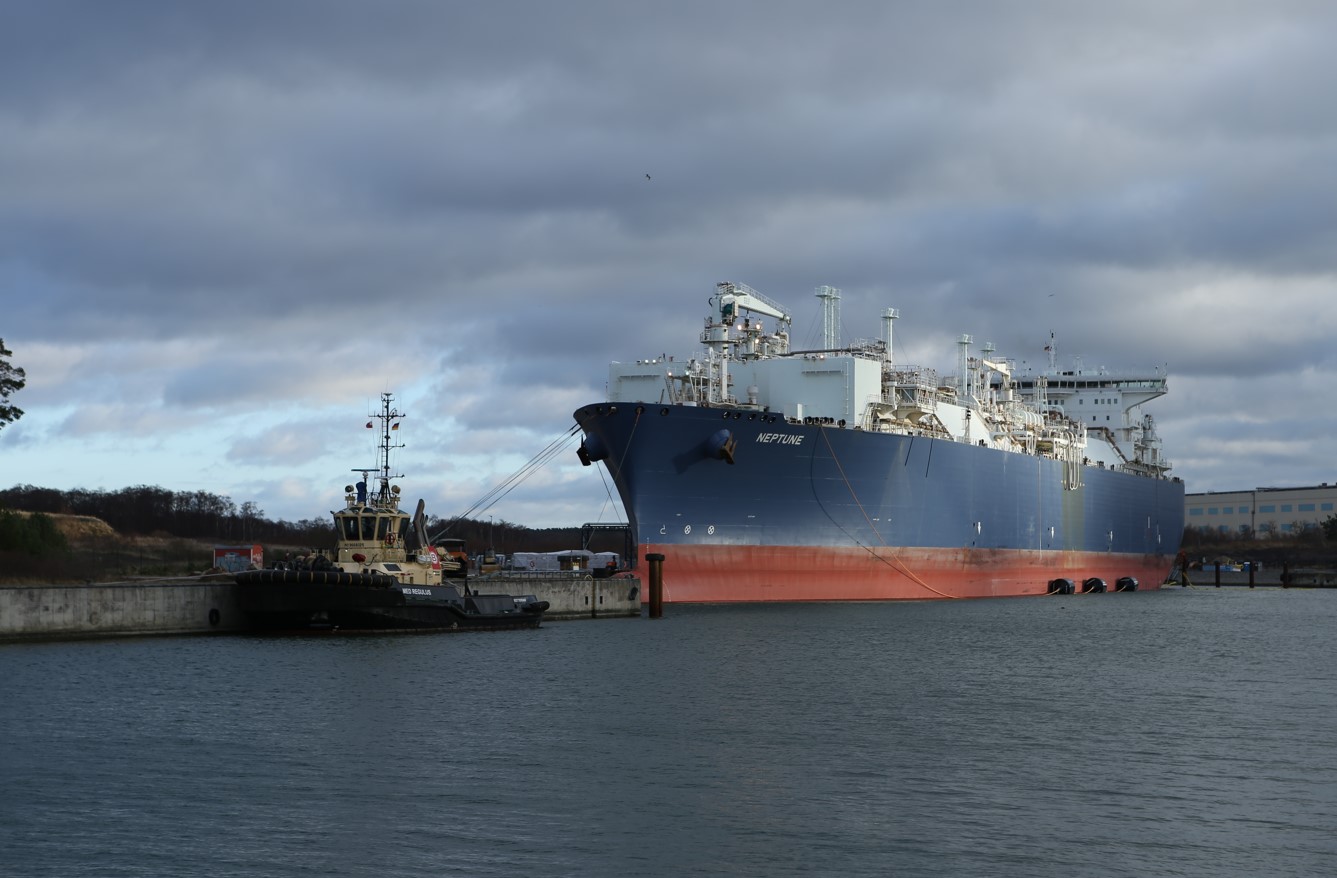German LNG terminal operator Deutsche ReGas has welcomed the second floating storage and regasification unit at its LNG import terminal in Germany’s port of Mukran.
The 2009-built 145,000-cbm, FSRU Neptune, has arrived on Wednesday at the “Deutsche Ostsee” energy terminal in the industrial port of Mukran, Deutsche ReGas said in a statement.
The unit, which is 50 percent owned by Hoegh LNG and sub-chartered by Deutsche ReGas from TotalEnergies, left in May Germany’s industrial port of Lubmin, where it served the Lubmin terminal.
Deutsche ReGas officially launched its Lubmin FSRU-based LNG import terminal, first private LNG terminal in Germany, in January last year.
After leaving Lumbin, Neptune was located for about a month at Fayard, in Denmark’s Odense port, to complete preparational work prior to its deployment at the Mukran LNG terminal on the island of Rügen.
Two FSRUs
Deutsche ReGas recently said that it expected to launch full operations at the Mukran LNG facility in July.
Prior to the arrival of Neptune, the terminal featured the 2021-built 174,000-cbm, Energos Power, owned by US-based Energos Infrastructure.
In June last year, Deutsche ReGas signed a deal with the German government to sub-charter the FSRU delivered in 2021 by Hudong-Zhonghua. Deutsche ReGas took over the charter of Energos Power in October last year.
Moreover, Deutsche ReGas received the first LNG tanker at the Mukran facility in March as part of the commissioning phase, and in April it received an operating permit for the facility.
Last month, Deutsche ReGas moved Energos Power offshore Mukran ahead of the arrival of the second FSRU.
The FSRUs will be located side-by-side at the berth 12 in the Mukran port.
“In the course of the next few days, the second regasification vessel Energos Power will also be stationed alongside the Neptune, completing the terminal,” Deutsche ReGas said in the statement.
A spokesman for Deutsche ReGas told LNG Prime that “the terminal is still in commissioning subject to the permission.”
Largest LNG import capacity in Germany
Once both FSRUs are in Mukran, the terminal will offer an annual regasification capacity of up to 13.5 billion cubic meters of natural gas and will be able to cover up to 15 percent of Germany’s total natural gas demand, Deutsche ReGas said.
Deutsche ReGas said the privately financed terminal has the largest capacity of all German LNG terminals and plays a “central role” in supplying eastern Germany, industrial consumers in south-western Germany, and neighboring Eastern European countries.
Besides the FSRUs, the Mukran terminal includes the 50-kilometer-long pipeline Ostsee Anbindungsleitung (OAL).
Germany’s Gascade built this pipeline which connects the LNG terminal in the port of Mukran with the German gas transmission network in Lubmin.
Belgium’s Fluxys recently bought a 25 percent stake in this pipeline.
The terminal is connected to the pipeline via the entry point named the Baltic Energy Gate
(BEG).
In June, Deutsche ReGas invited market participants to express an interest in capacity at the Mukran FSRU-based facility from 2024 to 2027.
Deutsche ReGas said the terminal has been designed for a nominal sendout rate of 1,254,000 MMBtu/d, while net LNG tank capacity of the terminal is 310,000 cbm.
This allows for up to 3 cargoes to be simultaneously regasified at any given time creating a sendout profile of 9 days for the terminal users, the firm said.

